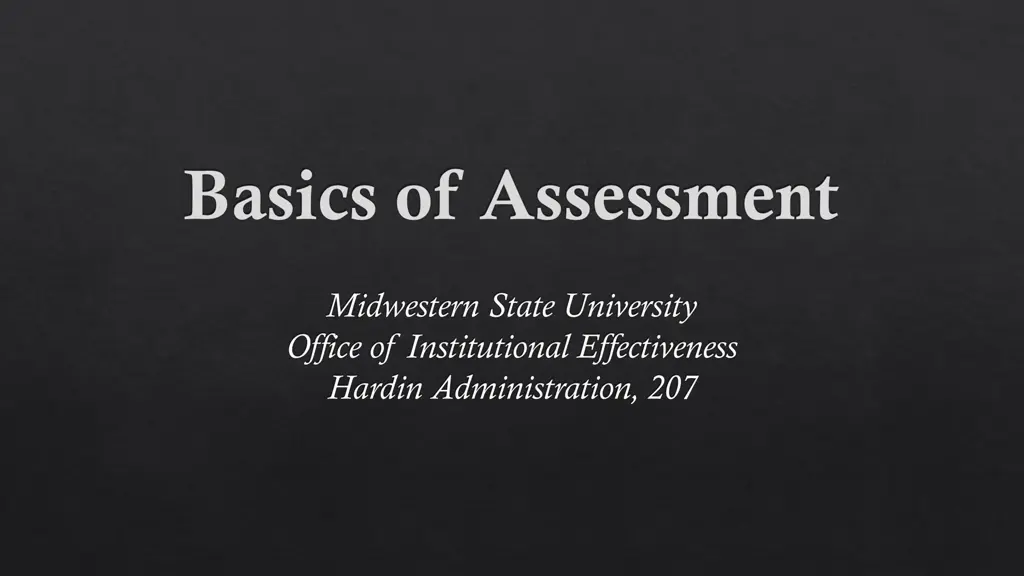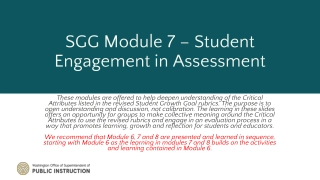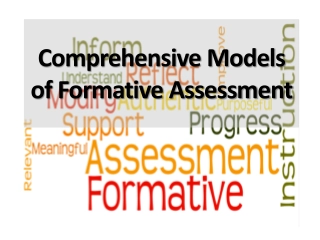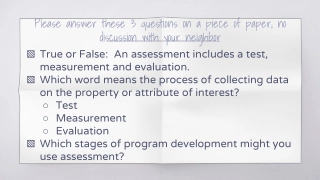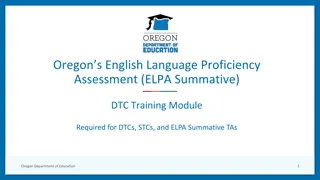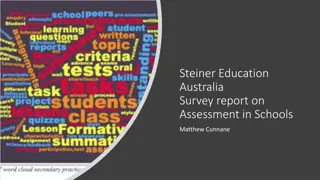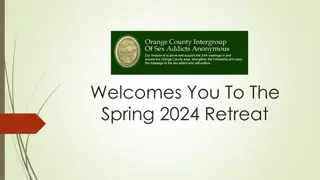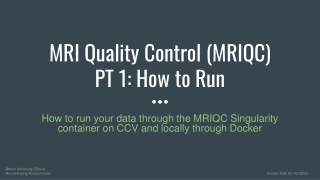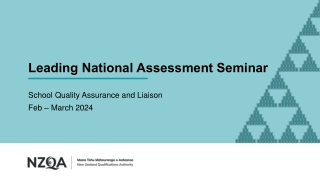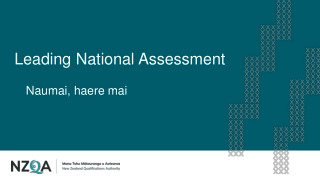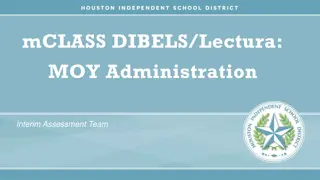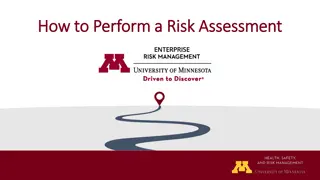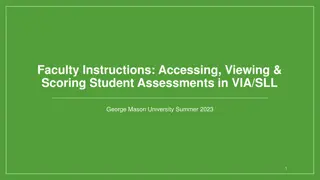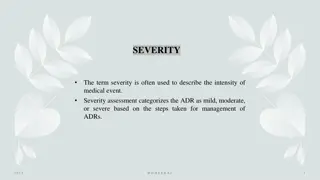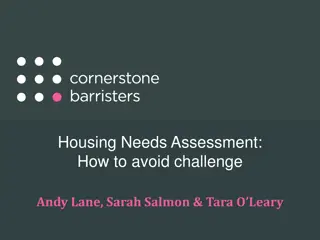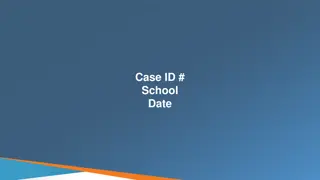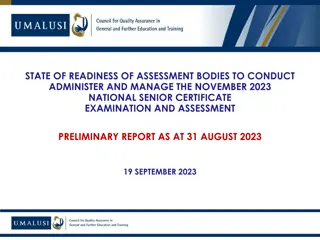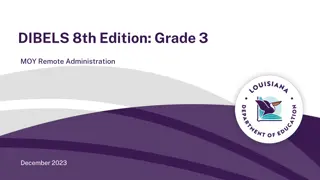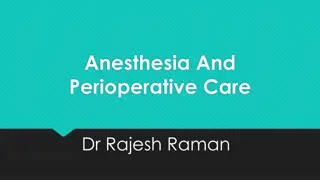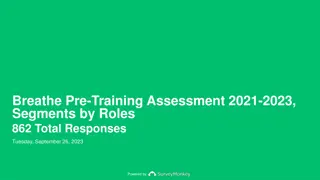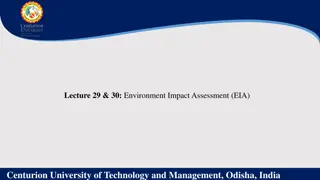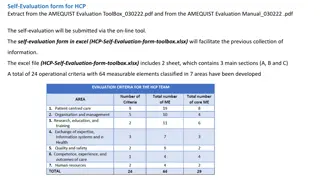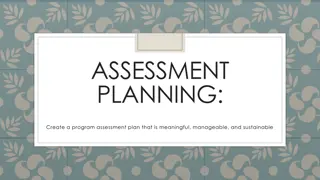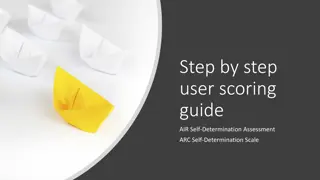Basics of Assessment
The basics of assessment at Midwestern State University, including the purpose, benefits, compliance, commitment, assessment cycle, and components.
Download Presentation
Please find below an Image/Link to download the presentation.
The content on the website is provided AS IS for your information and personal use only. It may not be sold, licensed, or shared on other websites without obtaining consent from the author. Download presentation by click this link. If you encounter any issues during the download, it is possible that the publisher has removed the file from their server.
Presentation Transcript
Basics of Assessment Midwestern State University Office of Institutional Effectiveness Hardin Administration, 207
Purpose of Assessment Assessment at Midwestern State University is the foundation for institutional effectiveness. Assessment also contributes to the process of continuous improvement for academic programs, as well as educational support and administrative offices. Continuous evaluation is done across the university through established objectives and measures, collecting data, and implementing action plans for programs and departments on campus.
Basics & Benefits of Assessment Ongoing process that takes place throughout the year. Enhanced learning. Improved academic and administrative programs. Greater communication among faculty and staff. Creation of a culture of learning. Ability to recognize trends and patterns that impact success and student learning. Chance to receive feedback from faculty, staff, and students. Accountability for goal setting and following through. Reflection.
Compliance & Commitment Compliance -External Questions -Number/Amount -Reporting -Collection of Information -Accreditation Commitment -Internal Questions -Quality/Unity -Interpreting -Using the Information -Learning
Assessment Cycle November 1 -Assessment plans are due into Weave. November 1 to December 1 -Deans and Vice Presidents review plans. December 1 -Assessment cycle closes. December 1 to February 1 -Peer review process. February 1 -Peer review forms are due to the Office of Institutional Effectiveness.
Assessment Components Mission Statement Assessment Narrative Outcomes - Academic: Student Learning Outcomes (SLO s) - Administrative: Functional Outcomes Measures Targets Findings Action Plans Attachments
Mission Statement & Assessment Narrative Mission Statement - The mission statement of your department or program. Assessment Narrative -The assessment narrative is where you highlight the important factors that contributed to the assessment cycle within the past year. It is written as a one to two page summary that discusses not only how assessment plays a role in the department, but also how it is meaningful and being used to improve upon student learning or services being provided. It includes the following main ideas: Process: What did the assessment process look like throughout the year? Results: What were some of the main themes and discoveries from the year? Challenges: What were some challenges the department faced during the year? Positives: What were some positives from the year? Collaboration: How did the department work together towards continuous improvement throughout the year? Reflections: What is there to reflect on from the year?
Student Learning Outcomes (SLOs) Used by those who work directly with students, or for departments who provide services to students. Measurable and meaningful. Specific and realistic. Minimum of three. Questions to keep in mind: -What do you want students to learn? -What do you want students to gain from the program?
Functional Outcomes Used by those who do not work directly with students. Academic programs can include functional outcomes in their assessment plan, but they must be in addition to, and not in place of, the three required SLO s. Measurable and meaningful. Specific and realistic. Minimum of three. Questions to keep in mind: -What kind of services do you strive to offer? -What is the purpose of the services you provide?
Measures 2 Types - Direct: - Indirect: Students reflect on the learning Students demonstrate the learned knowledge/skills W s - Who: - What: - When: - Where: Who was the population being measured? What tool was used to measure? When was this measure being done? Where was this measure being done? Each SLO needs a minimum of two measures, including one direct measure and one indirect measure. It is highly recommended that each functional outcome has a minimum of two measures.
Targets What is the desirable level of performance for students? What is the desirable level of performance for specific tasks and programs? Try to use specific percentages or numbers when possible. This can include scores.
Findings Describes what the data shows, and whether or not a target was met. Include specific numbers and percentages when possible. Findings can show the following for targets: - Met - Not Met - Exceeded - Not Reported this Period - Partially Met ***For assessment at Midwestern State University, we ask that this option is not selected. Instead, select one of the other four options. If a target was not reported on/no data was able to be collected, please provide a brief explanation as to why.
Action Plans Based on findings. Required for targets that were not met. Describes detailed steps that will be taken to improve the program or services being provided, as well as when this action will be implemented. Discusses how the target will stay the same or change for the future year, based on what the results were. If a target has consistently not been met for multiple years in a row, it is recommended to reexamine if this target is realistic or not, as well as the themes and patterns the data might show of why it has not been met. If a target has consistently been met or exceeded for multiple years in a row, changing or raising the target is recommended, or even reexamining if a new outcome should replace it if the overall goal of that outcome has been met. If the assessment plan has action plans from the previous year, they should be updated to reflect if they are completed or still in progress.
Attachments Attachments are not required, but they do a great job at supplementing the assessment process and the data that is being reported. The peer review and IE office feedback will always be attached from the previous year. Attachments can include, but are not limited to: - Examples of data that was collected - Rubrics - Student work - Meeting minutes - Findings
Questions? Contact: Dr. Eboneigh Harris, Director of Planning and Assessment Hardin Administration, 207B eboneigh.harris@msutexas.edu x4567 Stephanie Mescher, Assessment Specialist Hardin Administration, 207 stephanie.mescher@msutexas.edu x4342
